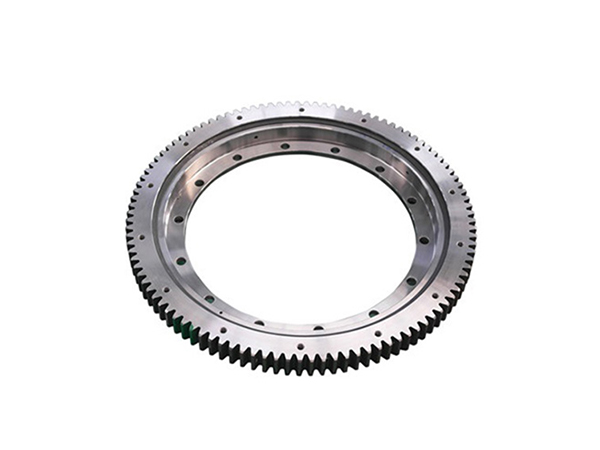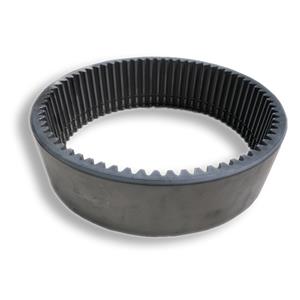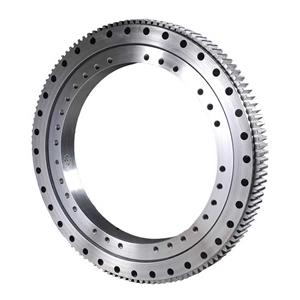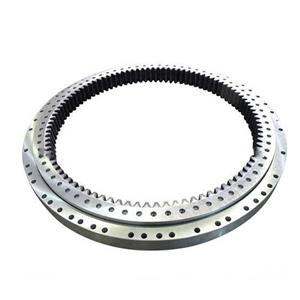What are the differences and connections between slewing rings and bearings?
Although slewing bearings and bearings are both mechanical transmission components, they have certain differences in structure, function, application fields, etc. The differences and connections between slewing bearings and bearings will be elaborated on from several aspects below.

1. Structural differences and connections: Slewing bearing is a mechanical component specially used to support and transmit torque. It is often used for fixing and supporting rotating parts in mechanical equipment. Xuzhou Hailin Slewing Bearing Co., Ltd. introduced that it is mainly composed of several basic components such as inner and outer rings, rolling elements, sealing rings, and lubrication holes. The slewing bearing uses rolling elements to cause relative rotation between the inner and outer rings, thereby completing the rotational transmission function of the mechanical system.
The bearing is a mechanical component used to reduce frictional resistance and support the shaft. The structure of the bearing is relatively simple, mainly composed of several basic components such as inner and outer rings, rolling elements and cages. The bearing uses rolling elements to create relative motion between the inner and outer rings, thereby reducing friction and reducing energy loss during the transmission process.
2. Functional differences and connections: Slewing bearings are mainly used in slewing transmission systems in large mechanical equipment, such as bridges, cranes, rotating platforms, etc. It can withstand large radial and axial loads and large moments, and at the same time has high rotational accuracy and stiffness, and can achieve smooth rotational motion.
Bearings are mainly used to support and rotate shafts and reduce friction losses during transmission. Its main function is to support and position the shaft, bear axial and radial forces, and realize the rotation transmission function of the mechanical system. There are many types of bearings, and different types of bearings can be selected according to different working conditions, such as rolling bearings, sliding bearings, ball bearings, needle roller bearings, etc.
3. Differences and connections in application fields: Slewing bearings are mainly used in large mechanical equipment such as engineering machinery, lifting equipment, metallurgical equipment, ships, and aerospace. For example, the slewing bearing plays the role of supporting the rotating part and transmitting torque in the crane; in the excavator, the slewing bearing is used to connect the remote control, slewing parts and the fuselage, and realize the mechanical system through components such as rolling elements and sealing rings. high-precision rotation.
Bearings are widely used in mechanical equipment in various fields. For example, bearings are used in suspension systems, engine systems, etc. in automobiles; in wind turbines, bearings are used to support and rotate the rotor shaft; in industrial machinery, bearings are used to support and rotate conveyor belts, etc.
To sum up, there are some differences and connections between slewing bearings and bearings. From a structural point of view, the slewing bearing is more complex and the bearings are relatively simple; from a functional point of view, the slewing bearing is used to support and transmit torque, and the bearing is used to reduce friction and support the shaft; and from the application field point of view, the slewing bearing is mainly used in Rotary transmission systems in large mechanical equipment, and bearings are widely used in various mechanical equipment. However, both slewing bearings and bearings play an important role in the field of mechanical engineering, providing effective support for the normal operation of mechanical equipment.




